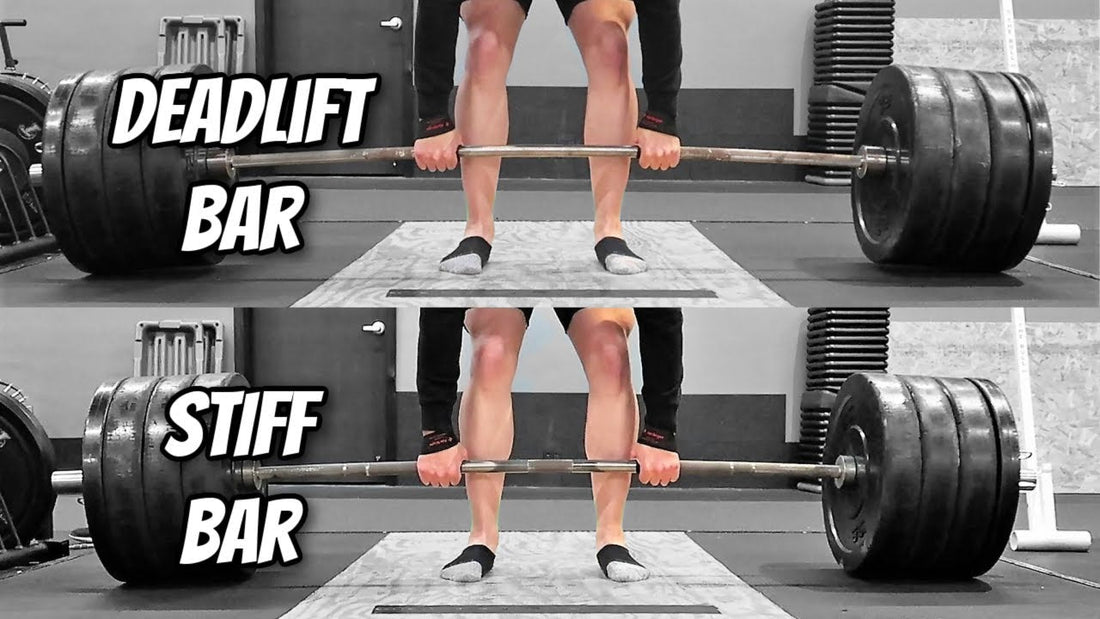
The Deadlift Bar vs. The Stiff Bar: A Deep Dive for Competitors
To the novice lifter, all barbells look the same. But for a competitive powerlifter, the difference between a deadlift bar and a standard stiff bar is a night-and-day distinction that can add or subtract 20kg or more from your pull. The type of bar you train on versus the one you compete on can have a massive impact on your performance. This guide will provide a deep dive into the differences between these two bars.

The Stiff Bar (Power Bar): The All-Rounder
This is the standard bar used in most gyms and is the official bar for all three lifts in the IPF and its affiliates.
-
Key Characteristics:
- Diameter: Typically 29mm.
- Knurling: Aggressive.
- Stiffness: Very rigid with minimal flex or "whip."
- The Feel: A deadlift with a stiff bar is a pure, brute-force pull. The entire weight of the bar and plates must be broken from the floor simultaneously. The lockout is often considered "softer" as there is no bar oscillation.
The Deadlift Bar: The Specialist
This specialty bar is used in many non-IPF federations (like the USPA and WRPF) specifically for the deadlift.
-
Key Characteristics:
- Diameter: Thinner, typically 27mm.
- Length: Longer than a standard power bar.
- Flexibility ("Whip"): The combination of a thinner and longer shaft allows the bar to bend significantly under load.
-
The Feel: Pulling on a deadlift bar is a different skill.
- Easier Grip: The thinner shaft is significantly easier to hold onto.
- The "Whip": As you initiate the pull, the center of the bar will rise several inches before the plates actually break the floor. This allows you to get into a higher, more advantageous hip position before lifting the full weight.
- The Lockout: The oscillation of the bar can make the lockout feel "whippy" and harder to control for an inexperienced lifter.
As detailed by many elite lifters and equipment resources like Rogue Fitness, the deadlift bar is specifically engineered to allow for a heavier pull.
The Performance Difference
The difference is significant. It is common for a lifter to be able to pull 10-25kg (25-55lbs) or more on a deadlift bar compared to a stiff bar, due to the combined advantages of the better grip and the whip.
The Principle of Specificity: Why This Matters to You
The Principle of Specificity dictates that you must train for the conditions you will face in competition.
- If you compete in the IPF: You must train primarily with a stiff bar. Using a deadlift bar in training will give you a false sense of strength and leave you unprepared for the brutal reality of a stiff bar on meet day.
- If you compete in a federation that uses a deadlift bar: You must practice with one. Learning how to effectively use the whip to your advantage is a skill that takes time to develop.
The barbell is not just a piece of equipment; it's part of the competitive landscape. Understanding the profound difference between a deadlift bar and a stiff bar is crucial for any powerlifter who plans to compete. By training with the correct bar for your chosen federation, you ensure that your performance in the gym will accurately translate to your performance on the platform.








